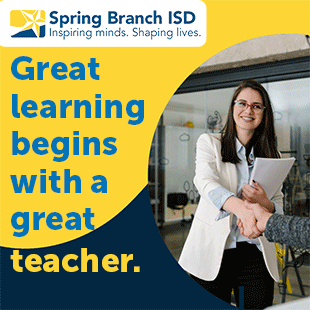Margo Gottlieb offers a look at the other side of language education


We approach 2020 with hindsight, insight, and foresight: hindsight in realizing the pervasive inequities that have dominated the education of multilingual learners, insight into recognizing substantive changes that are inevitable if we are to co-exist as an educational community, and foresight in envisioning a promising future for our students in which social justice prevails. With a commitment to protecting the language status of multilingualism and the benefits it yields, educators are beginning to take it upon themselves to break down the metaphorical wall that has existed in K–12 education—one built from unfortunate misperceptions and misunderstandings that have come to define the field of language education.
This barrier has been slowly erected from decades of neglect of multilingual learners—all students who identify themselves with multiple languages and cultures—and negativism toward language-support programs. For years, deficit or subtractive instructional models have been the norm, English learners have been isolated from their peers, and the curriculum has been weak and poorly aligned to mainstream education. Amid the crumbling bricks, however, a new vision is emerging in which educators, policy makers, and communities are becoming empowered to take action. As a result, we are beginning to witness glimmers of hope, with more opportunities for our students to contribute to their own learning and thrive in linguistically and culturally relevant classrooms.
This article describes efforts to enhance education opportunities for a subset of multilingual learners—that is, students in elementary and secondary schools who have been named English learners or English language learners with or without disabilities, students with interrupted formal education, and long-term English learners, who despite being categorized and labeled, at times in a pejorative way, are overcoming obstacles to succeed academically, often in more than one language. It presents a series of shifts that are occurring at the classroom, district, and state levels that taken together are creating a synergy that is making a difference for today’s and future generations of multilingual learners.
The Urgency to Take Action
How do you change the mindset of a nation whose strength has been built on the multilingual resources of its immigrants yet, rather than leveraging the assets of its most precious resource, the children, has systematically relegated multilingual learners to second-class status? In school, these students have often been treated as if they are a problem in need of repair (Escamilla, 2016) rather than being seen from a more positive, strength-based stance where language is regarded as a human right (Ruíz, 1988). In other words, monolingual ideologies where English is the lingua franca and monolingual competence is the benchmark of further language development have tended to dominate the educational arena (Ortega, 2013).
What can we do as educators dedicated to the value of educational equity to enable students to pursue educational goals based on their individual merits? How can we ensure fair treatment of our multilingual learners and their families? How can we leverage multiple languages and cultures from the vantage point of our students and their potential contributions to our society? How can we capitalize on the “funds of knowledge” of families and communities (González, Moll, and Amanti, 2013) while we help shape each student’s unique “funds of identity” (Esteban-Guitart, 2016)?
With the unprecedented rise in numbers of multilingual learners in U.S. schools along with the equally impressive increase in dual-language programs that have also come to embrace proficient English speakers, we are at a critical juncture in our educational history. For although bilingual education was essentially eradicated with the federal No Child Left Behind Act of 2002, state propositions, and legislative acts, multilingual education has slowly been regaining acceptance and notoriety. For example, today Proposition 58, which favors instruction in multiple languages, replaces Proposition 227, which demolished bilingual education in California. Likewise, in Massachusetts, the 2016 Language Opportunity for Our Kids (LOOK) bill actually looks favorably on the building of multiple languages. Time has come to take advantage of this current momentum and take action.
Shifts in Educational Policy and Practice: A Peek into the Other Side of the Wall
As we revisit our past policies and practices in regard to multilingual education, little by little the wall of shame is being demolished and we are beginning to see a clearer vision of the future. There are certain deep-rooted beliefs that some may cling on to that simply are outdated, inappropriate, and ineffective, if not outright harmful. However, with a substantive and growing body of research that is supported by theory and educator will, together we can make a difference in the world of multilingual education.
When envisioning the future, there seems to be a glimmer of hope for members of the multilingual community. We have identified some critical shifts that are occurring throughout the educational landscape for all teachers of multilingual learners, whether school leaders, coaches, content specialists, classroom teachers, or language specialists, to act on as agents of change. With each shift presented below, there is a seed of an idea for how we can collectively impact and transform ideologies and practices. These shifts represent anchors on a continuum from where we have been to where we are going:
- From a deficit mindset to an assets-oriented way of thinking and doing—let’s always be mindful of what our multilingual learners can do
- From compliance with federal, state, district, and school policies related to multilingual learners to excellence across all levels—let’s ensure that educational practice extends beyond regulations and basic competencies for our students
- From watering down the curriculum and expectations for multilingual learners to challenging methodologies and practices—let’s inspire and motivate multilingual learners to reach their true potential
- From isolation of multilingual learners and their support services to collaboration among students, teachers, and school leaders—let’s promote co-planning, co-teaching, and co-assessing within a learning network
- From silence in classrooms with multilingual learners to conversation among peers in one or multiple languages—let’s encourage interaction of English learners with others of their partner language and with proficient English speakers to probe and discuss authentic real-life issues of importance to their worlds
- From language for language’s sake to language, literacy, and content that is presented as an integrated whole—let’s eliminate acontextual language learning and replace it with meaningful integration of language and content
- From assessment of learning with emphasis on summative scores to classroom assessment for and as learning—let’s move away from reliance on high-stakes measures to accentuate the active role of multilingual learners and their teachers in advancing teaching and learning
- From monolingualism as a narrow and limiting worldview to multilingualism as a recognized and valued way of being—let’s enrich the lives of all our students by embracing and growing multiple languages and cultures as part of their identities and schooling
- From “nobody cares” to “everyone and every community cares” and participates in the education of its multilingual learners—let’s make schools and communities a welcomed haven for multilingual learners and their families
A Unified Educational Community
What can we do as an inclusive group of educators and advocates—from students to teachers, coaches, school leaders, district administrators, teacher educators, and community leaders—to counter the ill effects of having multilingual learners being walled off from educational advancement? We must realize that collectively we can make a difference for English learners (as named in federal legislation) and their families by leveraging their great expanse of linguistic, cultural, and experiential resources and weaving them into the fabric of schooling.
Let’s think about and capitalize on the varied scientific, historical, and literary perspectives that multilingual learners bring. Let’s envision how these students’ lived experiences have affected their ways of thinking and how we might highlight and share them with others. Let’s create classroom and school-wide language policies that treasure multiple languages and cultures, rely on English learners as language experts and mentors, and respectively incorporate language and culture into the soul of our educational system.
Fall traditionally brings renewal of another school year. Let’s insist on high, yet realistic, expectations for every multilingual learner and negotiate reasonable student-centered goals for learning. Likewise, let’s not lose that enthusiasm for teaching and instill a love for learning in our multilingual learners by making their languages and cultures integral to every classroom and inclusive of school life. As educators, we must seize upon this urgency for change and begin to dismantle the disparaging wall of inequity and injustice.
As a side note, would you like additional information on these nine shifts and their application to various educational settings? Well, you are in luck. Over this academic year, be on the lookout for how you might work with a colleague, department, or team of educators to collaborate in probing more deeply into the shifts as we answer common yet challenging questions that arise across classrooms, schools, and districts.
References
Escamilla, K. (2016). “Empirical Applications of Ruíz’s Language Orientations: From theory to practice.” Bilingual Review, La Revista Bilingüe 33(3), 140–153.
Esteban-Guitart, M. (2016). Funds of Identity: Connecting Meaningful Learning Experiences in and out of School. New York: Cambridge University Press.
González, N., Moll, L., and Amanti, C. (2013). Funds of Knowledge: Theorizing Practices in Households, Communities, and Classrooms. London, UK: Routledge.
No Child Left Behind Act of 2001, Pub. L. No. 107–110, § 115, Stat. 1425–2094 (2002).
Ortega, L. (2013). Understanding Second Language Acquisition. New York: Routledge.
Ruíz, R. (1988). “Orientations in Language Planning.” In McKay, S., and Wong, S. (eds.), Language and Diversity: Problem or Resource? Boston, MA: Heinle and Heinle.
Margo Gottlieb, WIDA co-founder and lead developer, is a member of Corwin’s EL Collective who, along with her colleagues, has contributed to Breaking Down the Wall: Essential Shifts for English Learners’ Success (2020), now available.
- View From Watering Down to Challenging: Breaking Down the Wall, One Essential Shift at a Time here
- View From Monolingualism to Multilingualism: Breaking Down the Wall One Essential Shift at a Time here
- View From Deficit-Based to Assets-Based: Breaking Down the Wall One Essential Shift at a Time here
- View Breaking Down the Wall: The Other Side of Language Education here





